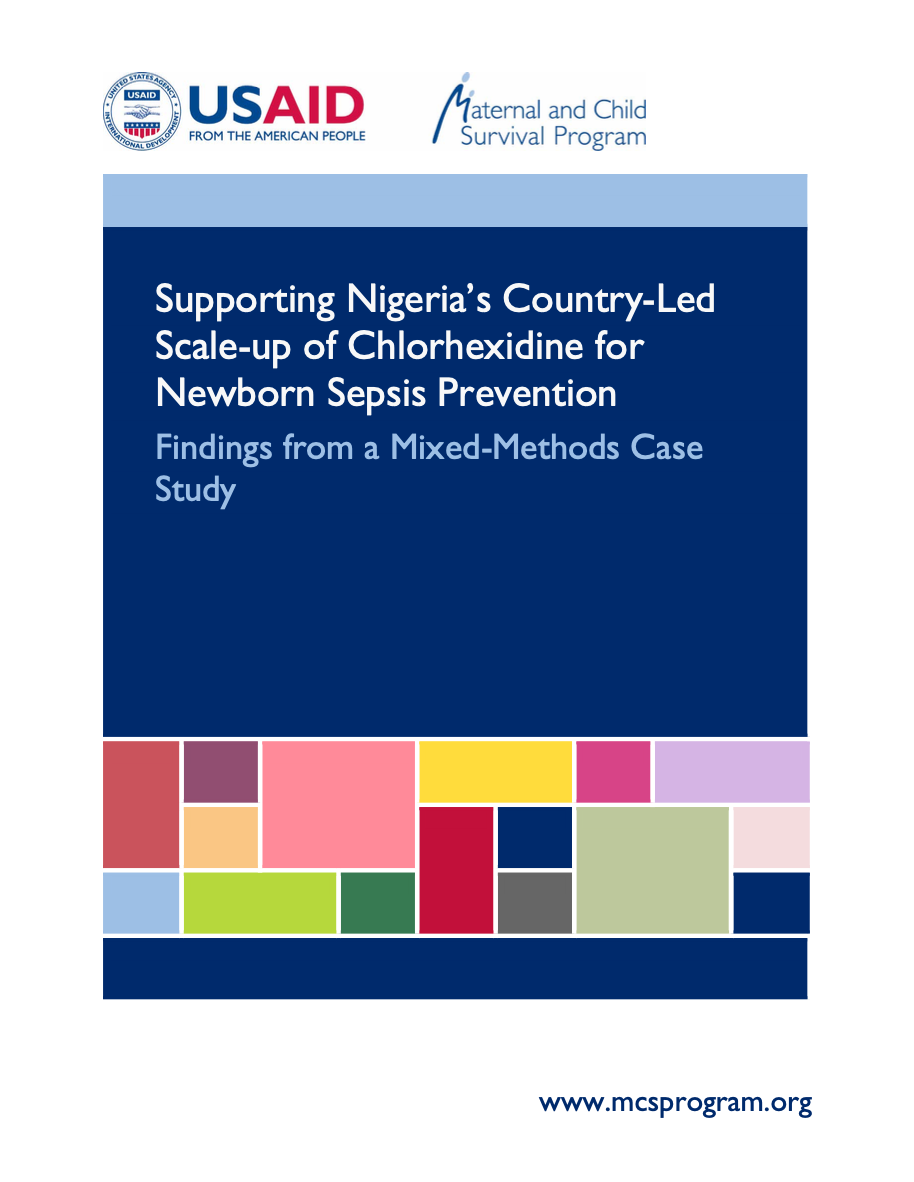Publish Date: May 2020
Author: MCSP
Nigeria’s neonatal mortality rate was estimated at 38 per 1,000 live births in 2013, one of the highest in the world.1 About one-fourth of these deaths were estimated to be due to infections, many of which could be prevented through proper umbilical cord care.2 Chlorhexidine (CHX) gel is an over-the-counter product that reduces neonatal infection when applied to the umbilical cord stump after delivery and during the first week of life. CHX was first introduced in Nigeria in 2012 through the first meeting of government and nongovernmental stakeholders and the U.S. Agency for International Development’s (USAID’s) Targeted States High Impact (TSHIP) Project operating in the northern States of Sokoto and Bauchi. The widely disseminated success stories from these two states, including engagement of Nigerian manufacturers for local production, provided local evidence that the Government of Nigeria needed to scale up the use of CHX for umbilical cord care. Country champions for CHX use also helped to disseminate these success stories through PATH’s global Chlorhexidine Working Group, which in turn helped to advocate for its countrywide scale-up.

